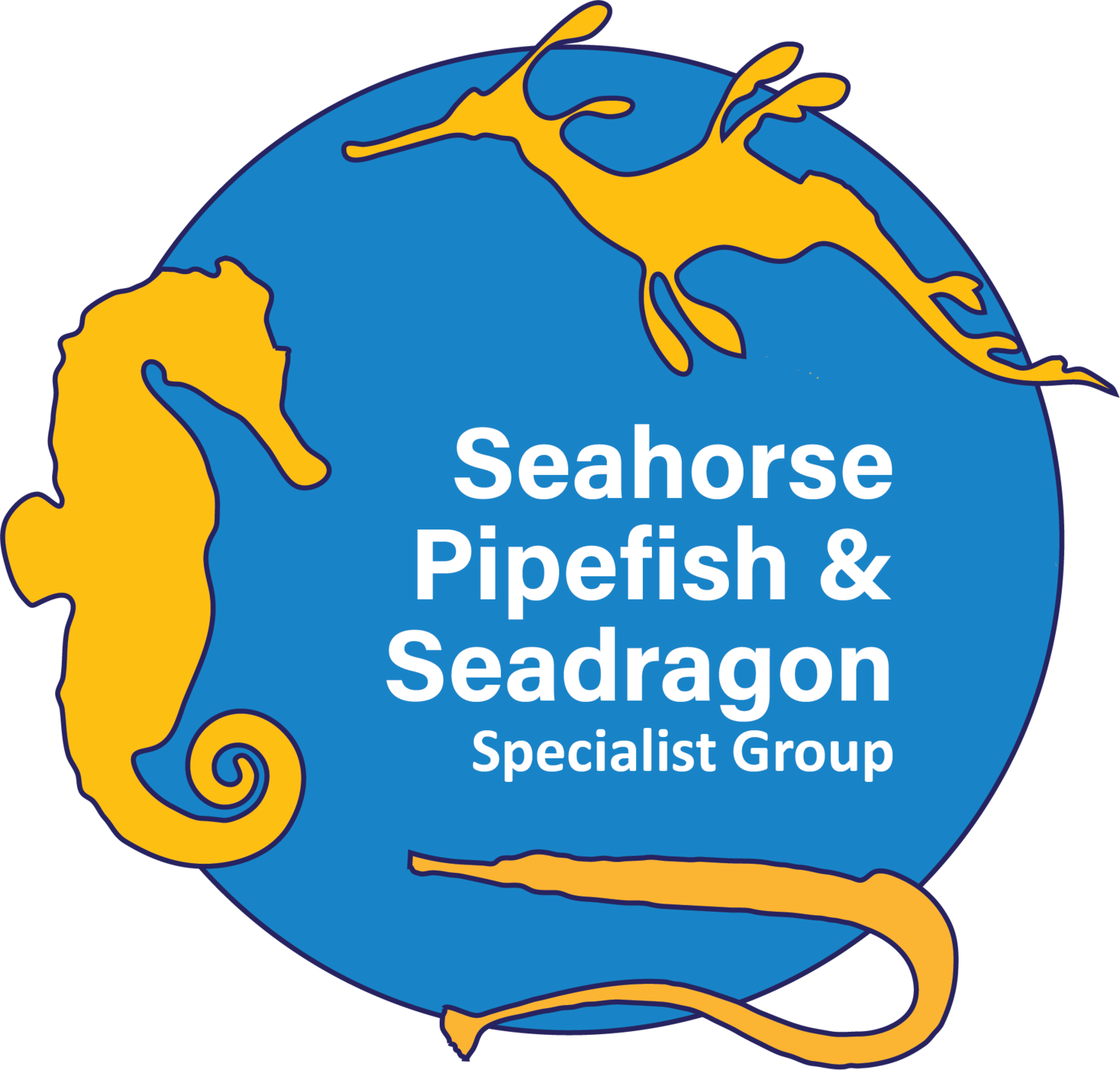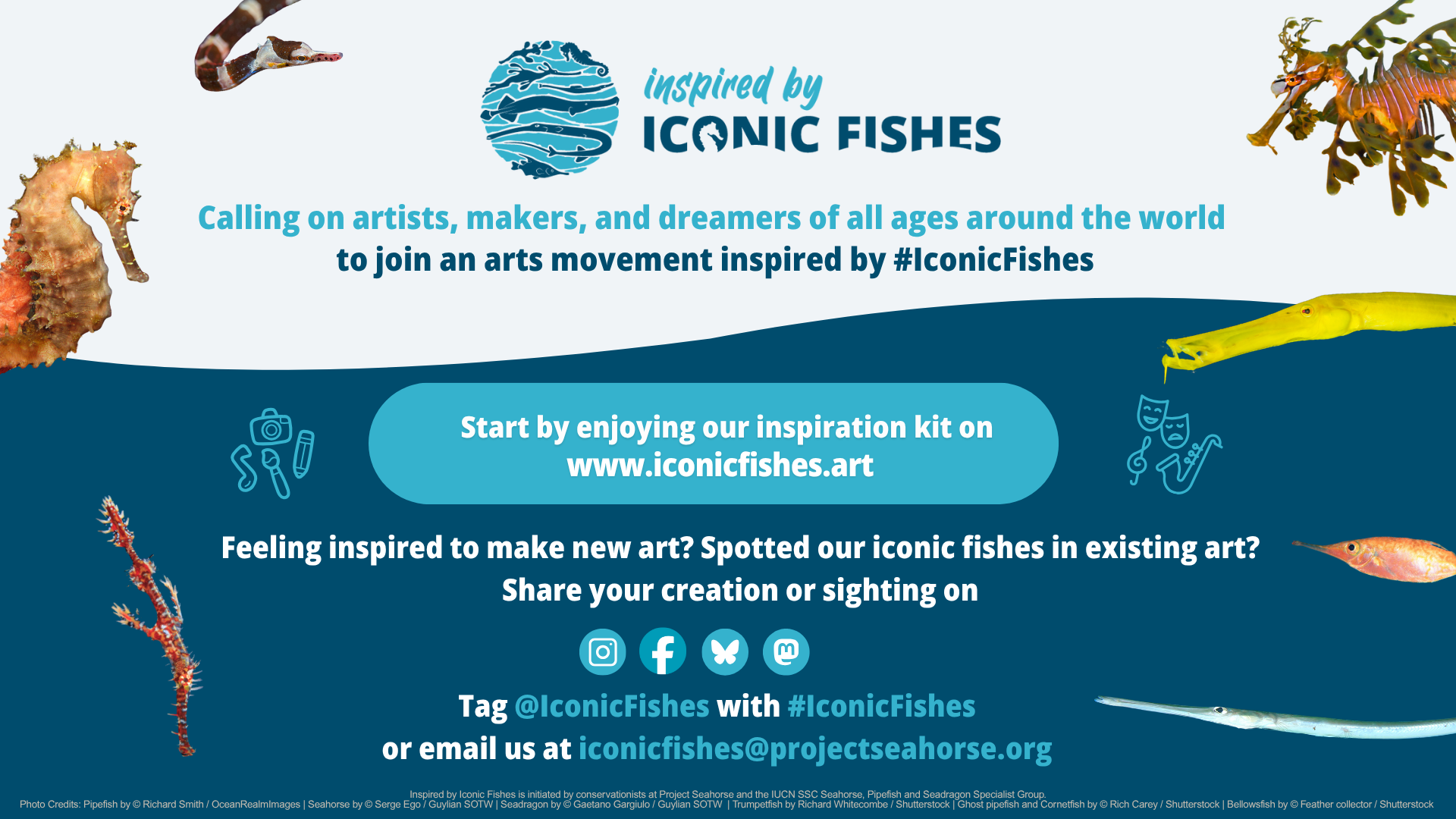Whether you paint, dance, doodle, weave, write, design jewellery, compose music, build Lego, cut potato prints or create in ways we haven’t imagined yet — this is your invitation to join a joyful, creative arts movement that connects people with conservation.
We are delighted to launch “Inspired by #IconicFishes” — a global arts movement inviting people of all ages, from every part of the world, to celebrate the wondrous lives of truly iconic fishes: seahorses, pipefish, seadragons, and their cousins: ghost pipefish, trumpetfish, cornetfish and bellowsfish.
“As scientists, we know that even the strongest science only makes a difference when it is seen, heard and felt. The arts can help us bridge that gap,” said Prof. Amanda Vincent, Director of Project Seahorse and Chair of the IUCN SSC Seahorse, Pipefish and Seadragon Specialist Group.
Initiated by conservationists at Project Seahorse, and the global expert group on Seahorse, Pipefish and Seadragon conservation, this bold new movement kicks off in advance of World Animal Day (4 October) and will grow for years to come.
Our #iconicfishes live around the globe and are living ambassadors of our ocean’s health: their charm sparks curiosity and helps shine a light on bigger issues facing our world’s coastal marine ecosystems, such as unsustainable fisheries, habitat loss and climate change.
By creating and/or sharing art inspired by #IconicFishes, we can all bring their stories to a wider audience, giving them the spotlight they deserve.
How to get involved
Whether you’re a student, an artist, a curious individual, part of a community or a member in an organization, we would love your participation in Inspired by #IconicFishes.
Getting started is easy:
Visit iconicfishes.art/participation to explore our inspiration kit packed with visuals and fun facts about our iconic fishes to spark your creativity.
Create new art and/or share existing art inspired by iconic fishes on Instagram, Facebook, Bluesky or the Fediverse, tagging @iconicfishes with #IconicFishes, so we can find and share your post. Not on social media? Email the art to iconicfishes@projectseahorse.org
Help us spread the word. Share our resources across your network and inspire even more people to get involved.
“With this initiative, we hope to build and grow a vibrant community where art and science intertwine to touch hearts and inspire action for our iconic fishes and the ocean on which we depend. So, let’s dance, sing, create or craft for these iconic fishes,” urges Prof. Vincent.



